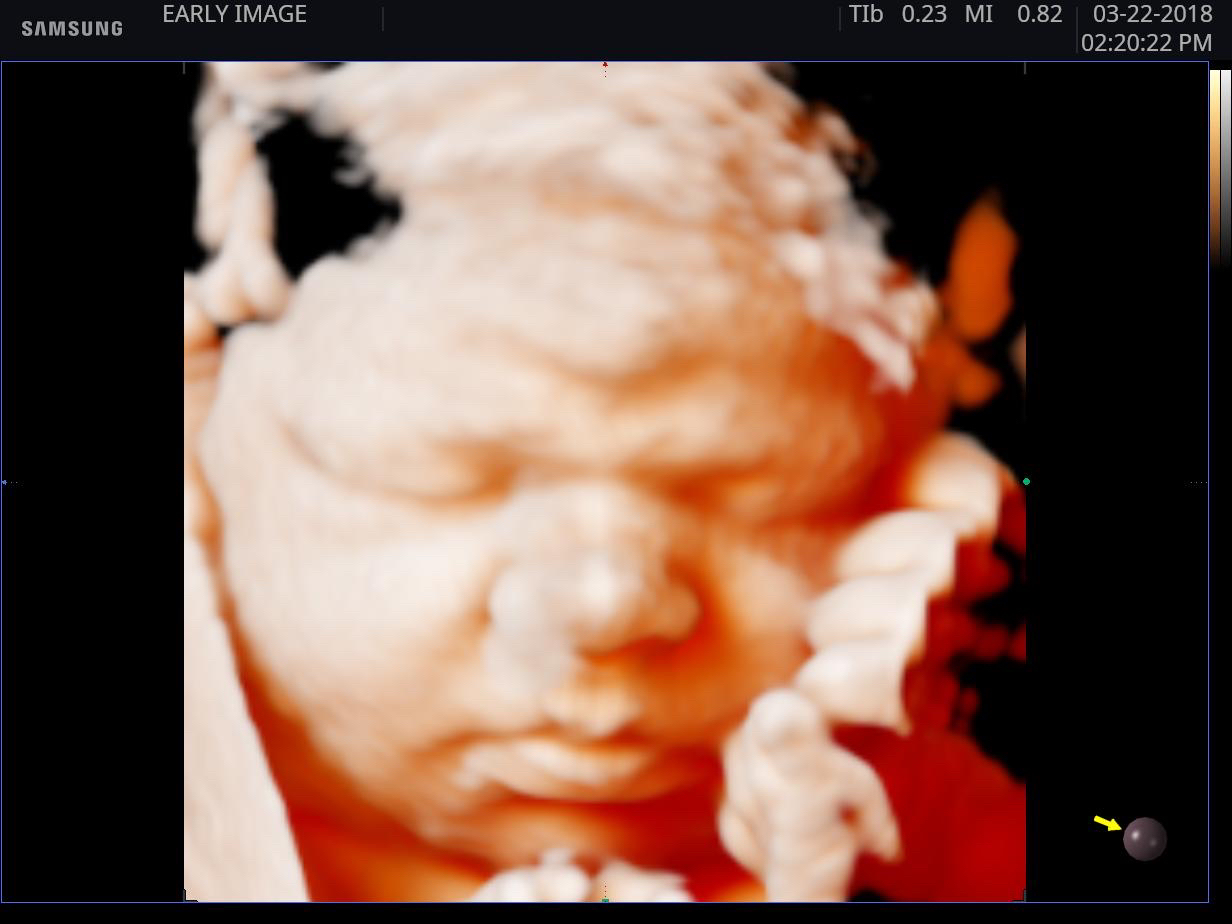

This incorporates a whole series of 2D frames taken in succession, followed by data analysis that is used to provide a 3D image. Matrix array sensors, which use one single sweep to acquire a considerable amount of data.Mechanical sensors built into the probe head.Freehand movements of the probe, with or without position sensors to form the images.Volume data is acquired using three techniques: The technology behind 3D ultrasound thus has to deal with image volume data acquisition, volume data analysis, and volume display.
#4D ULTRASOUND VIDEO SOFTWARE#
These images are then integrated by high-speed computing software to produce a three-dimensional (3D) image. Most of the detailed evaluation of fetal anatomy and morphology, to date, has been done using 2D ultrasound.ģ2 Weeks Pregnant 2D Ultrasound Baby Drinking Play 3D ultrasoundįurther development of ultrasound technology led to the acquisition of volume data, which produces slightly differing 2D images caused by reflected waves that are at slightly different angles to each other. Moving the transducer enables numerous planes of viewing, and when the right plane is achieved, as judged by the image on the monitor, a still film can be developed from the recording. The reflected waves then provide a flat, black-and-white image of the fetus through that plane. Traditional ultrasound scanning is two-dimensional (2D), meaning it sends and receives ultrasound waves in just one plane. Interactive, as it enables the operator to capture different viewing planes by moving the probe.Eliminates the use of ionizing radiation, which has been associated with toxic effects on the embryo.Real-time visualization of the fetus or organs.

The advantages of ultrasound imaging over other imaging techniques include: The strength of the reflected waves, and the time they take to return, form the basis for interpreting the information into a visible image. The emitted ultrasound waves are reflected by different structures encountered by the waves.
#4D ULTRASOUND VIDEO SKIN#
This imaging technique is also called sonography because it uses high-frequency sound waves to produce images of slices through the body.Ī transducer or probe which emits ultrasound waves is placed on the skin after coating it with a thin layer of conductive gel, which ensures that the waves pass smoothly through the skin. Ultrasound scanning is an important clinical tool in providing images of internal fetal anatomy, as well as a wide range of other organ systems. Image Credit: Natalia Deriabina / Ultrasound technology Liji Thomas, MD Reviewed by Benedette Cuffari, M.Sc.


 0 kommentar(er)
0 kommentar(er)
